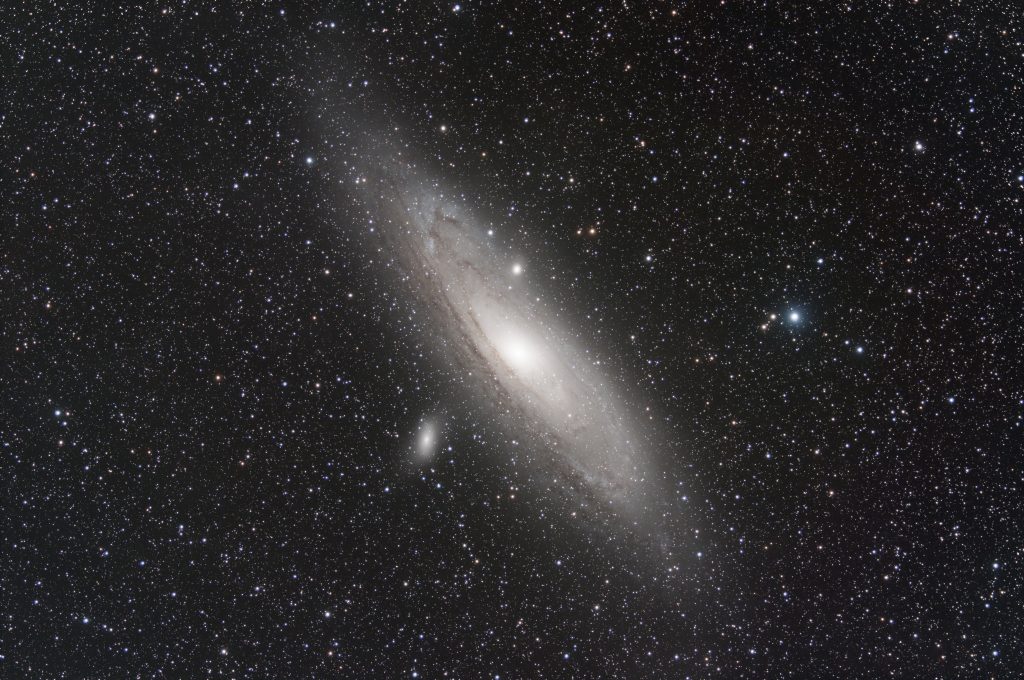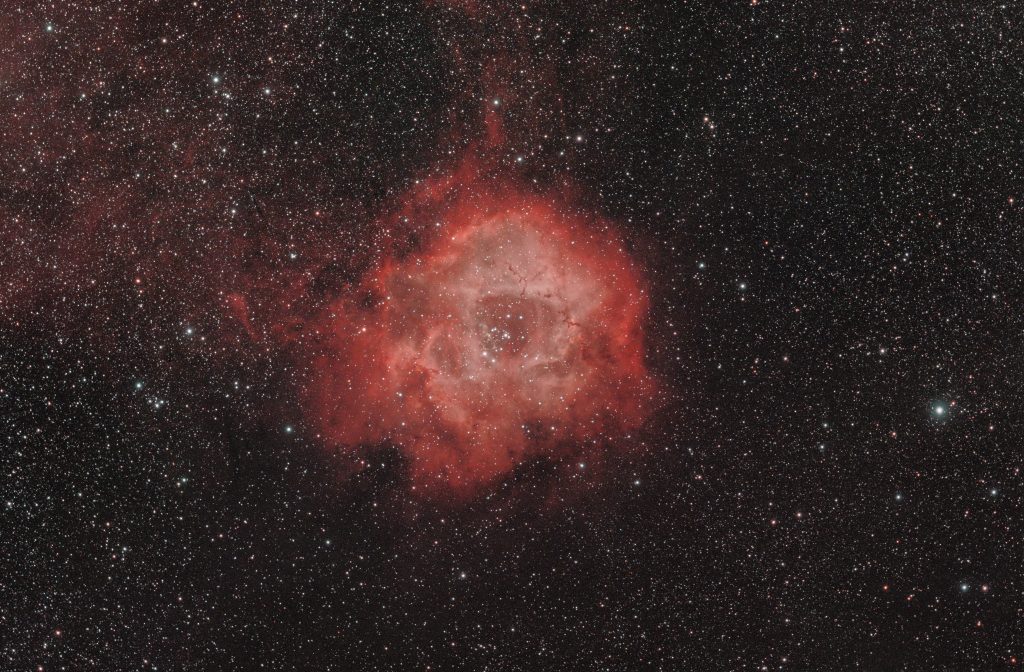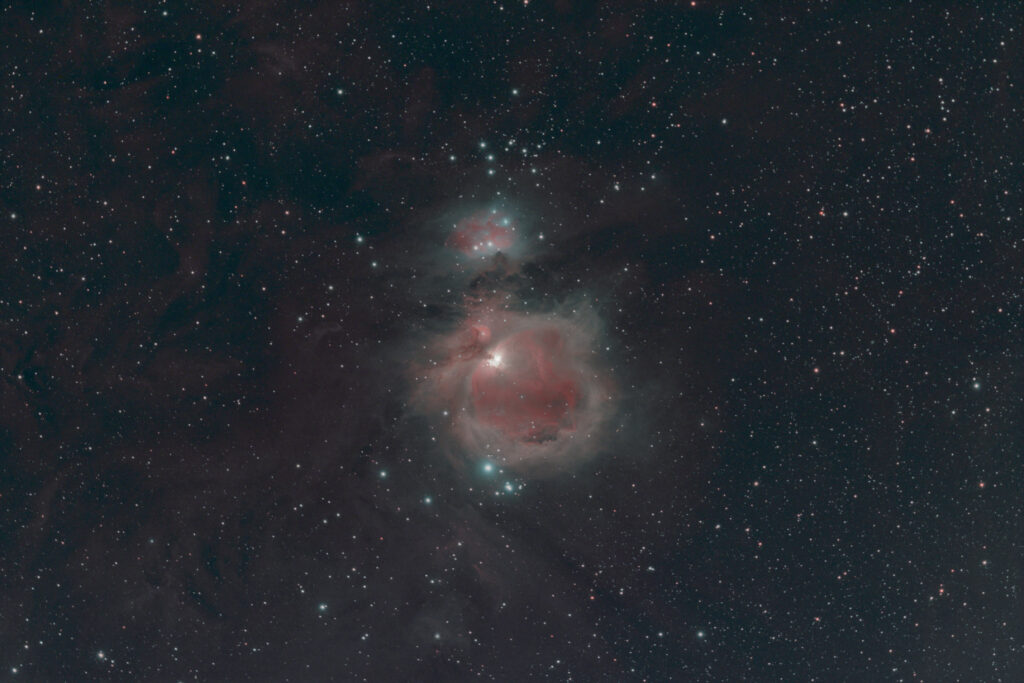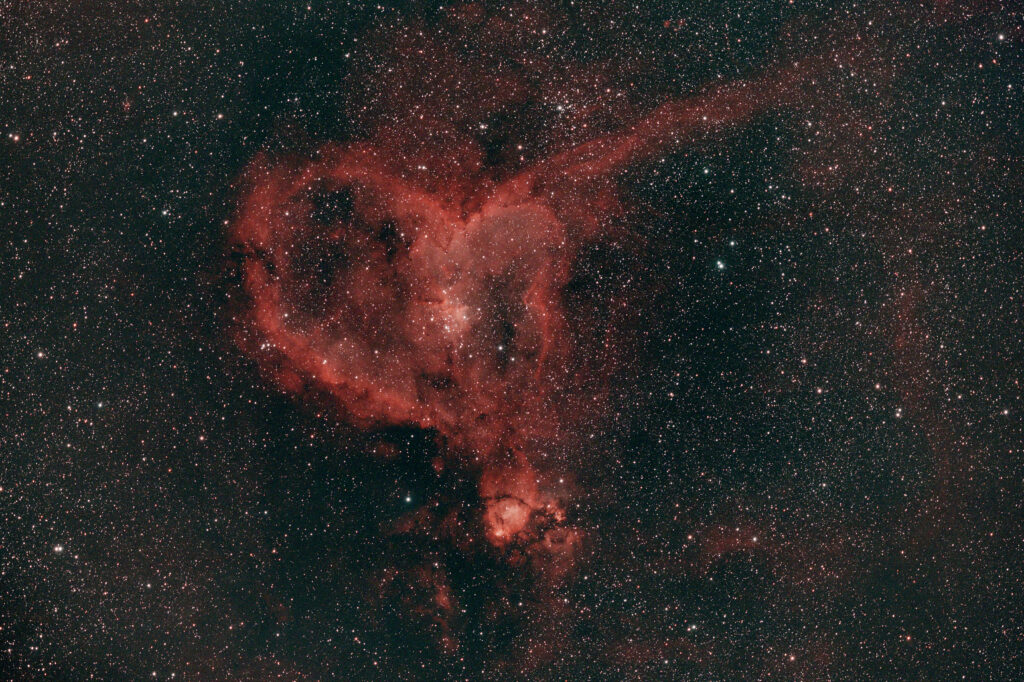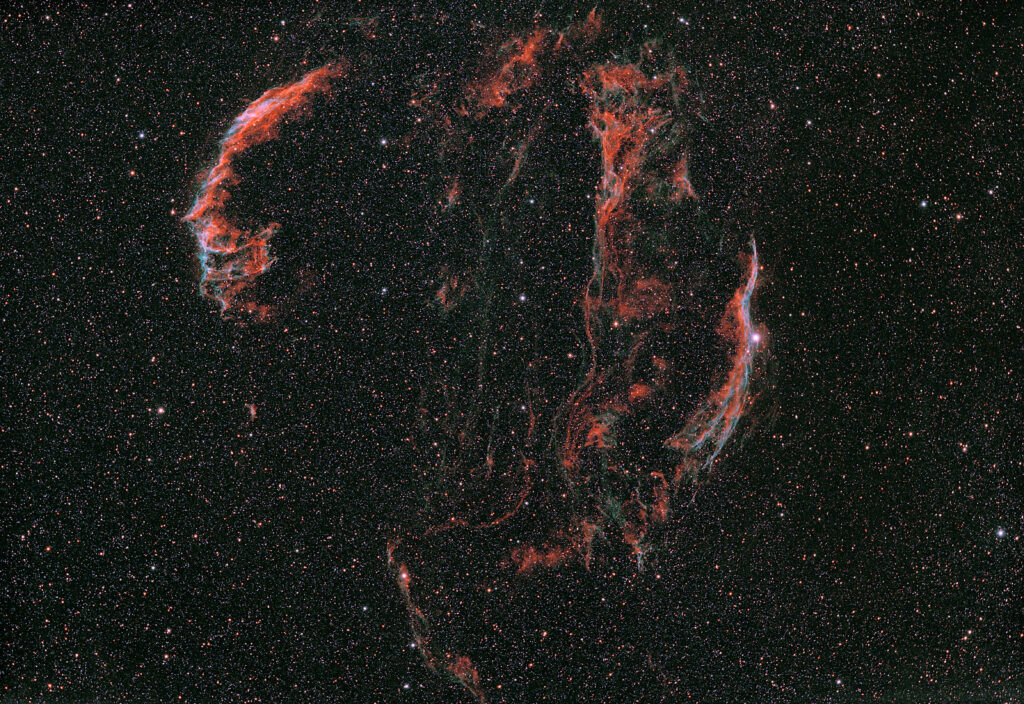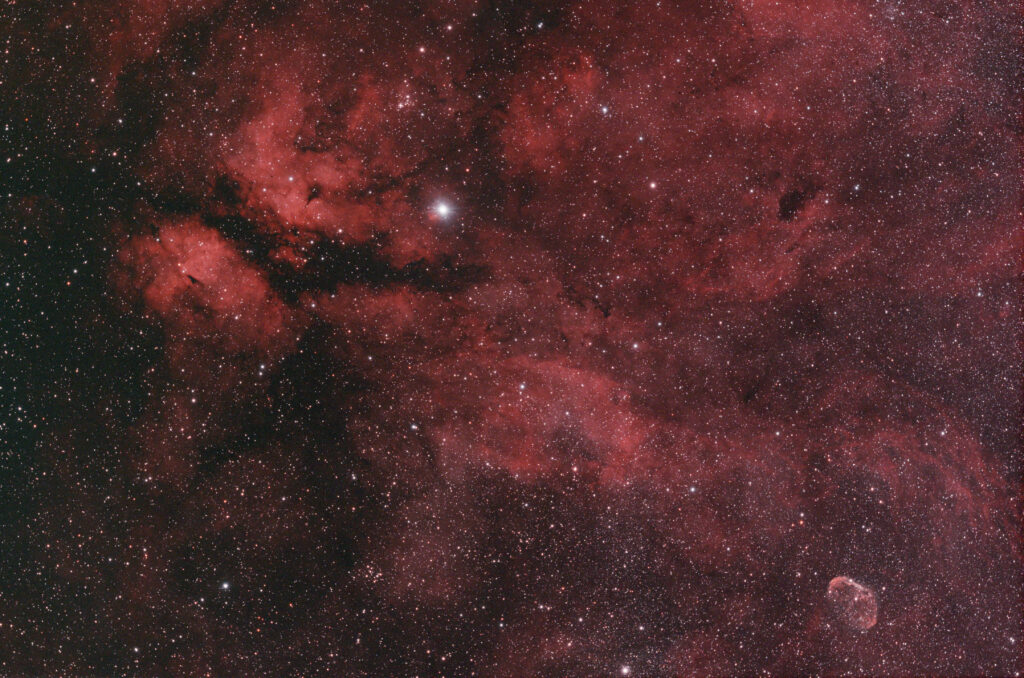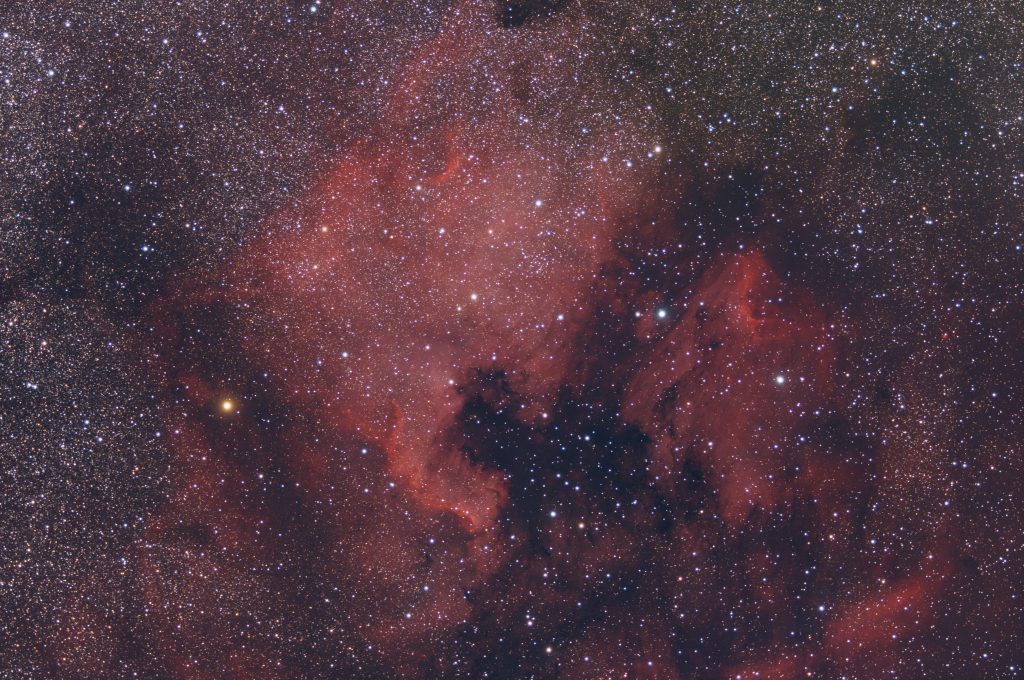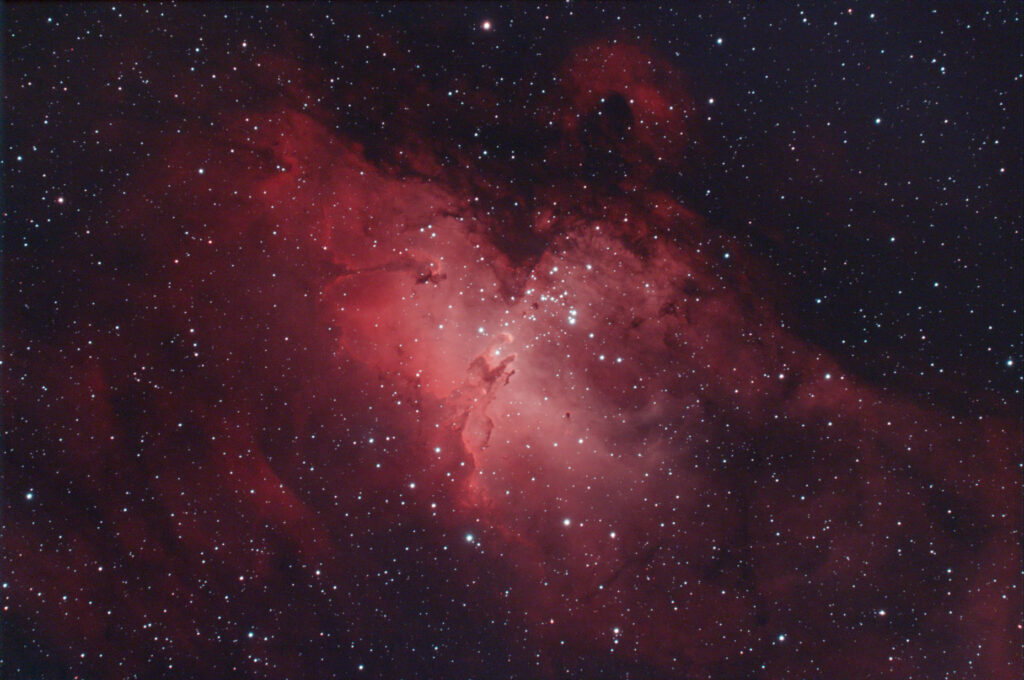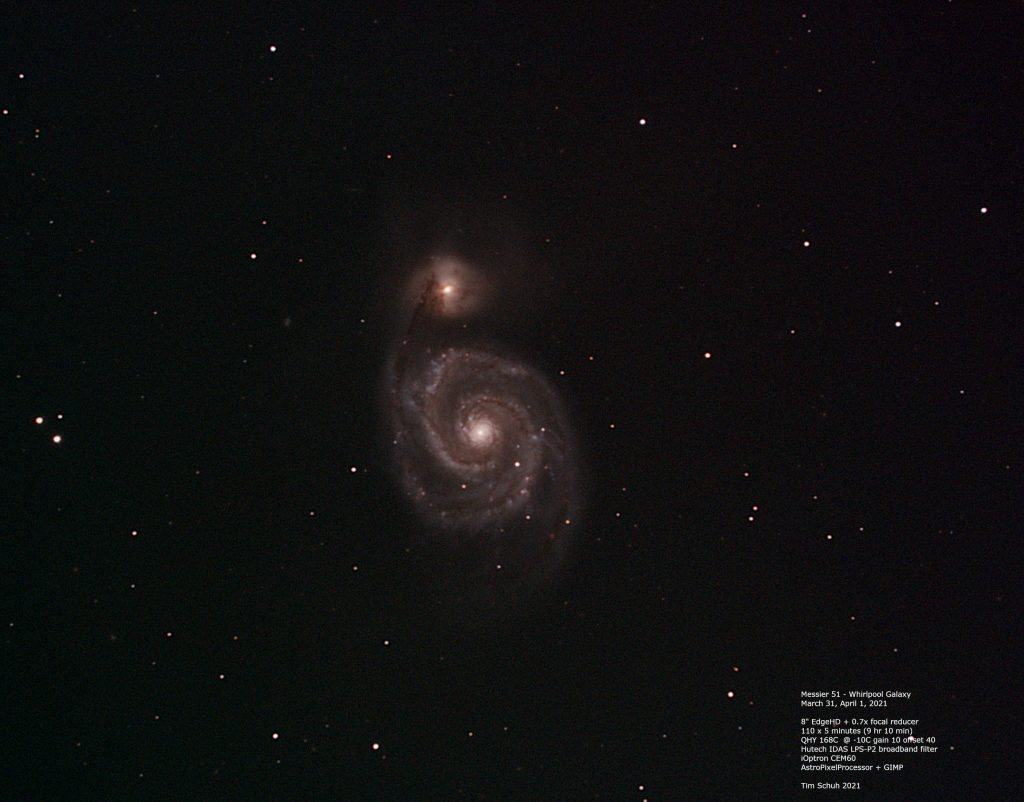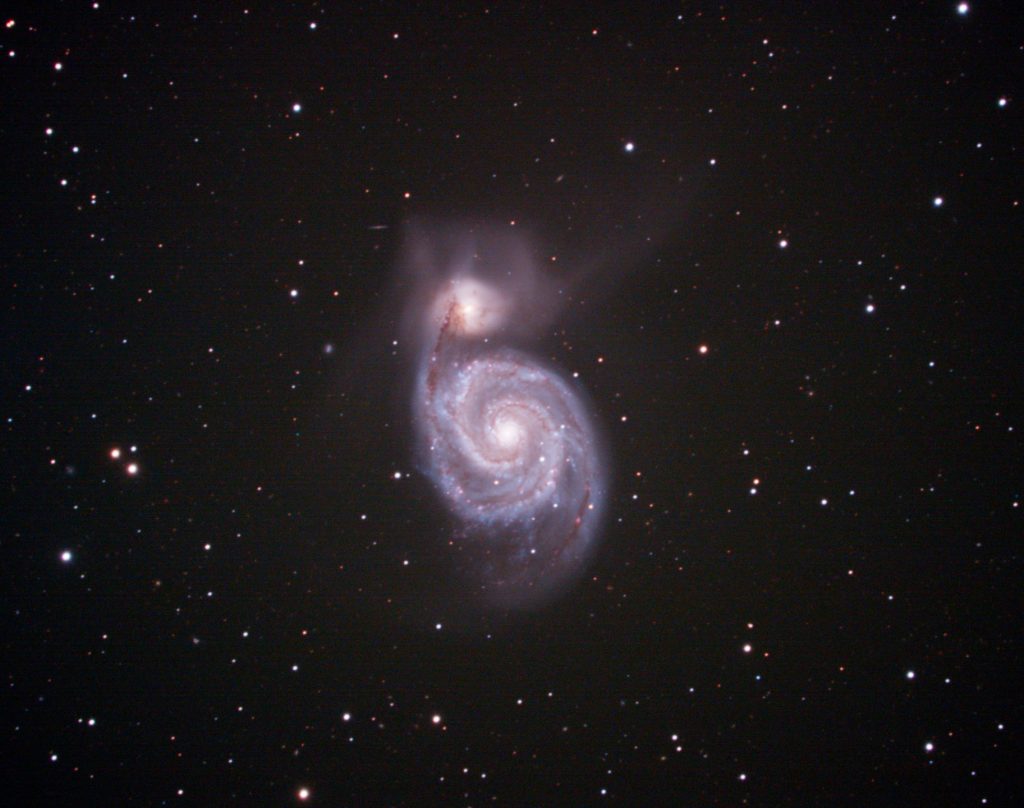Ok, as galaxies go, Andromeda is right next door at only 2.5 million light years. Light that reached my 61mm telescope earlier this year left shortly after the earliest humans learned how to use fire. In playing with some new software that uses AI and machine learning to reduce deviation due to the atmosphere I have started processing data that I didn’t feel was worth publishing before. Also some that I had presented in the past. In this particular case, this is data from my September trip to the X-Bar Ranch near Eldorado, TX. I used a technique called drizzle that was originally developed to further improve Hubble images when they were taking the Hubble Deep Field image. This, combined with Russell Croman’s BlurXTerminator plugin for PixInsight yielded the image below in what is an unbelievably short time for me. Click the image to see it in all it’s full resolution glory.
